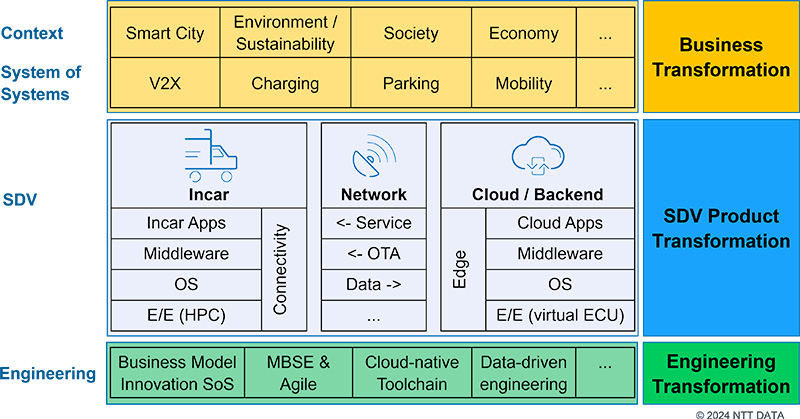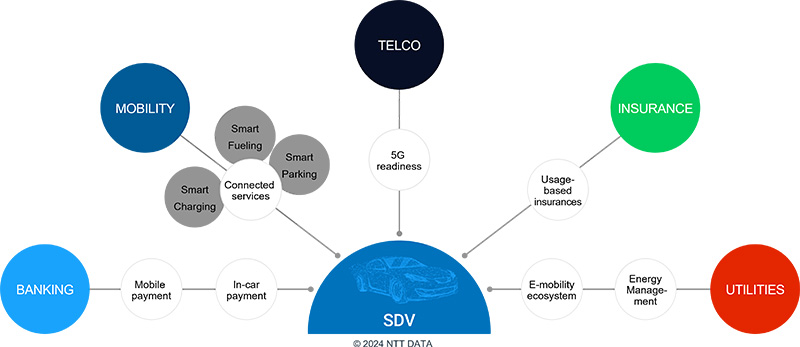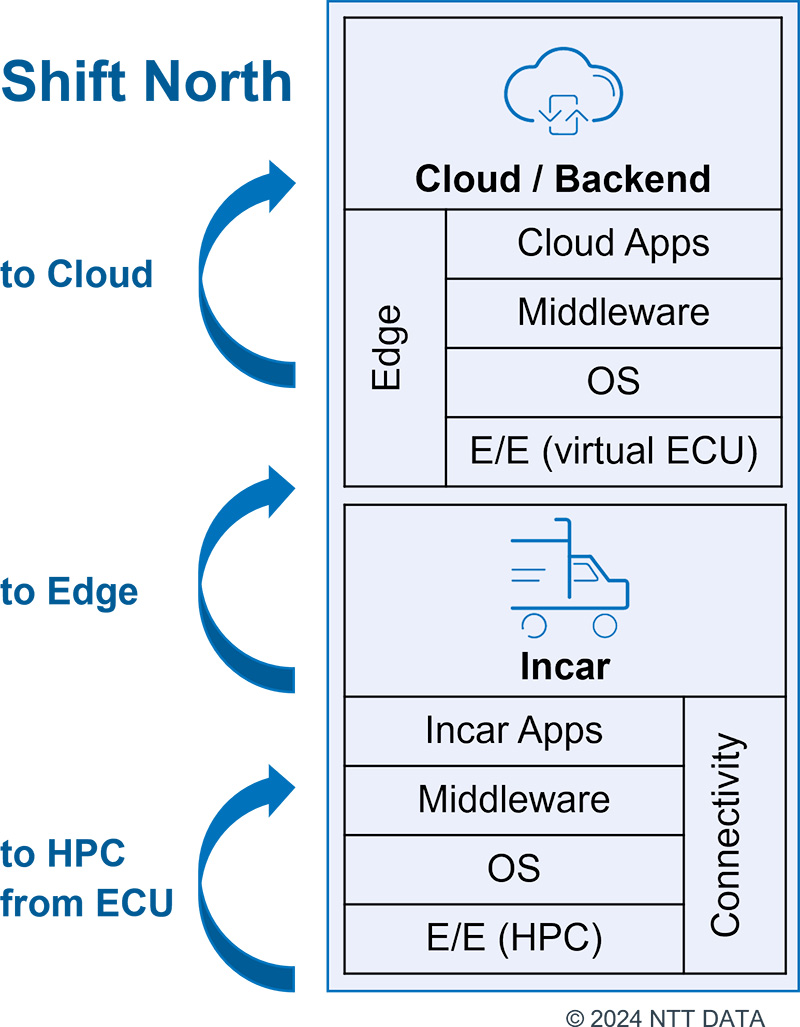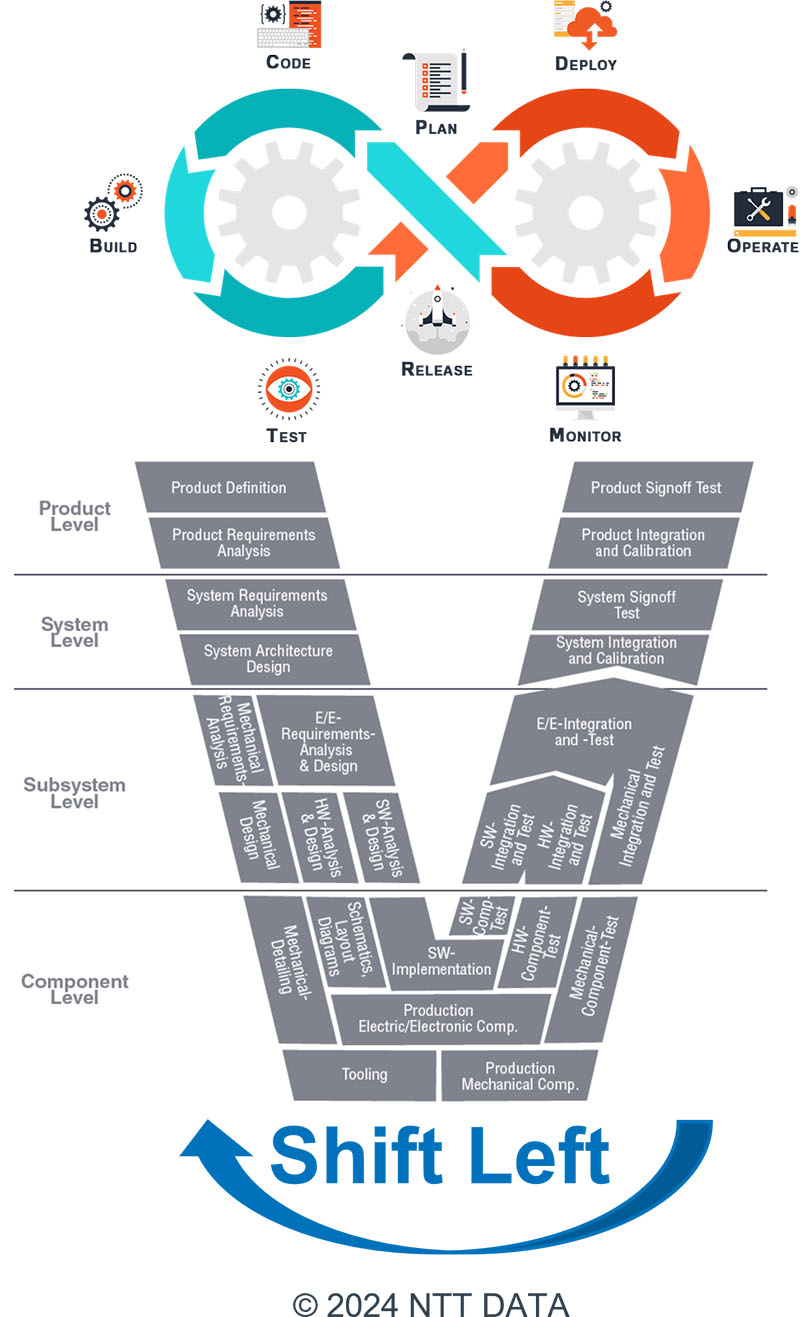What exactly is the transformative nature of software-defined vehicles (SDV)? This article explores transformation from a product development-perspective in three layers:
- automotive business including business models of various traditional and new players
- product from a "simple car" to smart connected SDV
- engineering processes, methods and tools for SDV development
Note: the article is based on my presentation at the "2023 Tokyo Systems Engineering Summit".

What is SDV?
The Business Case for SDV
Business transformation in a system-of-systems

From a product development perspective, this demands systems engineering with a system-of-systems approach. The system-of-interest is no longer only the car, but the mobility system including services from providers in the system context. The system boundary and the interfaces to the service providers need to be actively developed.
Choosing the right standards – and increasingly open source initiatives – is a key to decouple the SDV from changes in the context. The right use of standards also increases the monetizable fleet across car lines and model generations.
Automotive companies need to build new business capabilities to develop and operate SDV. Please find more information on our EAM (Enterprise Architecture Management)-based approach including our NTT DATA business capability model in this article on Business Transformation Management.
SDV Product Transformation: Shift-North
In traditional E/E architectures, each function had it's own ECU. Developing functions on 100+ distributed ECUs becomes prohibitively complex and expensive. This led to E/E architectures with fewer domain controllers and/or zonal controllers on high-performance computers (HPC), running multiple functions in parallel on one device. Standardized operating systems and middleware provide the hardware abstraction that enables this shift.
SDVs continue this "shift-north" to upper layers of the stack, i.e. implementing functions on edge or cloud computing resources instead of incar devices.

This is the critical SDV product transformation because it allows the development of software independent from the hardware, resulting in:
- delivery of new SW-based functions and frequent updates over the air (OTA)
- very high scalability for resource-hungry applications such as AI and entertainment
- seamless digital user experience across channels and interfaces such as HMI, voice, web, app
Engineering Transformation: Shift-Left

The V model for systems engineering has been another "best practice" in product development for quite some time. The SDV adds agile BizDevOps concepts to the traditional V model:
The main transformation here is the extension of the V model from product development to the operations phase – hence BizDevOps. Software needs to be maintained over the lifetime. This is not only required by regulations such as UNECE R155 / R156 for software-update and cyber-security management. It is also the basis of the SDV business model of selling software-based services after the initial purchase of the car. Monitoring of the fleet including collection of monetizable data and management of cyber-security threats is a required capability for the SDV business model.
The cloud-based software functions are typically not as safety-critical and real-time-sensitive as the embedded ECU functions e.g. in body or powertrain domains. For speed and efficiency, these cloud-based software functions do not require the complete rigor of the V model and can be developed according to modern, agile software engineering practices. In true DevOps fashion, the ALM environment (Application Lifecycle Management) provides continuous integration and deployment (CI/CD), so that changes can be tested quickly with test automation and deployed into the fleet with OTA.
Conclusion: Truly a Transformation
SDV transforms the automotive business model, the actual product and the engineering processes, methods and tools for SDV development. It promises substantial software-enabled revenues, but also requires massive investments into new business and technology capabilities.
NTT DATA offers comprehensive support for the SDV transformation in the automotive industry:
Automotive Consulting
- Business Strategy & Transformation Consulting
- Systems Engineering
- Production & Aftersales
- Cybersecurity
Technology Services
- SW Development (Embedded & Cloud-native; Apps & Backend)
- Infrastructure (Hybrid Cloud / Data Center; 5G)
Please find more information under Industry page Automotive.
Note: this is a cross-post from my blog article under link